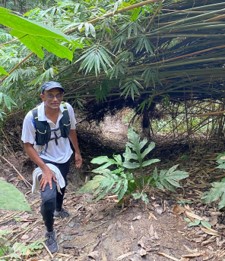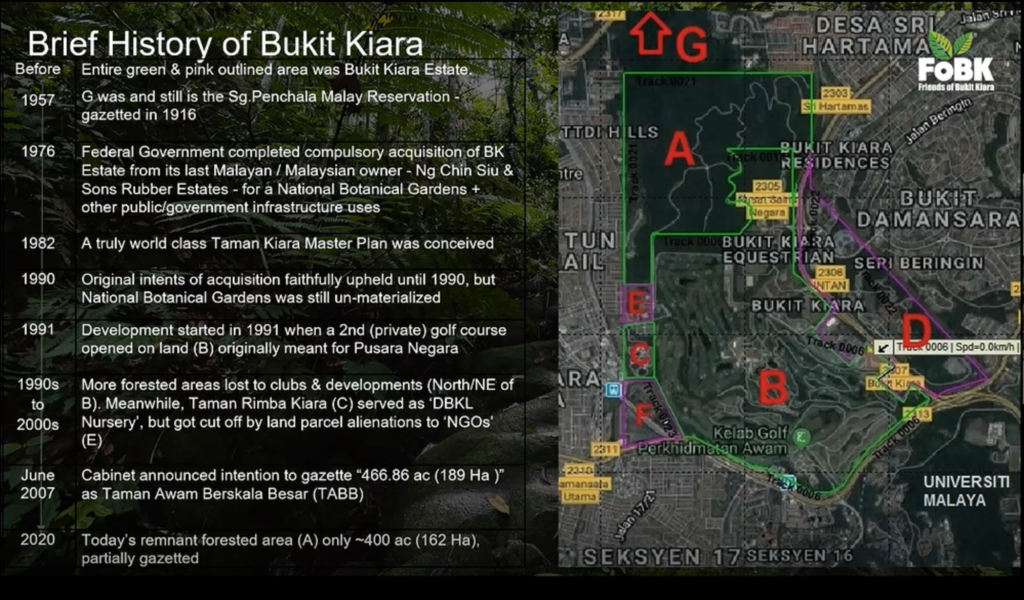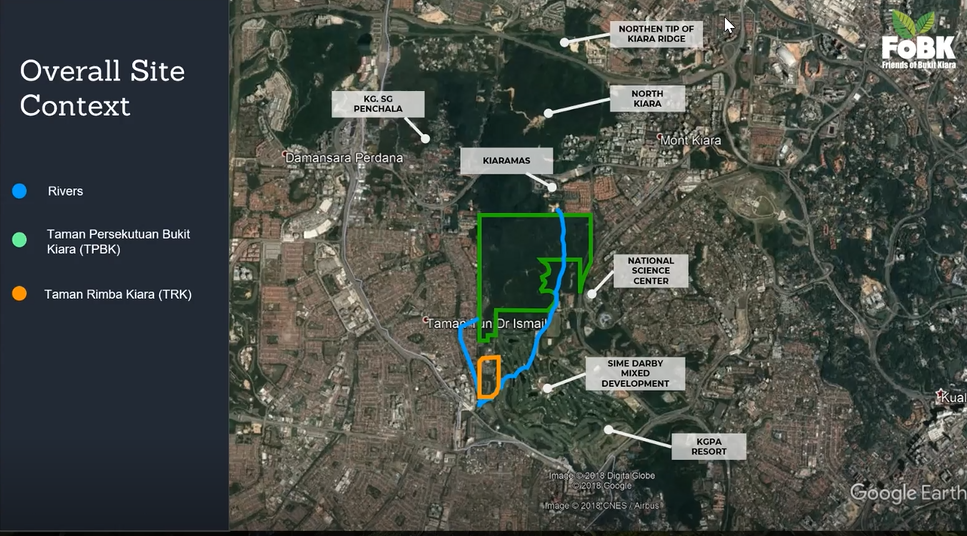

KUALA LUMPUR, Feb 4 – The Friends of Bukit Kiara (FoBK), which recently welcomed the court’s decision to allow the admission of the second series of the Auditor-General’s Report 2019 and the addendum to the Kuala Lumpur City Plan 2020 document in their case against Dewan Bandaraya Kuala Lumpur and the potential developer of a land in the area, said the group will continue to strengthen their evidences of why further development in the area will be detrimental in the long run – environmentally, financially and socio-economically.
Once a 1500-hectare piece of rubber estate owned by Ng Chin Siu and Sons Rubber Estates, the government made a compulsory acquisition of the entire land at a non-commercial rate in 1976 with the intention of developing a world class botanical garden (which has yet to materialize till today) and for other government institutional and public buildings.
While some of the developments were in line with the government’s original plan such as the Tuanku Bainun Children’s Creative Centre, National Institute of Public Administration or INTAN and the Securities Commission as well as a golf club for civil servants, Kelab Golf Perkhidmatan Awam, there was marked deviation from the plan by the 1990s onward, according to FoBK.
A non-governmental organisation, FoBK has been advocating saving the remaining reforested and rejuvenated areas of Bukit Kiara, now one of the final remaining green lungs in the city with rich ecosystem and biodiversity.
The world class Bukit Kiara Masterplan conceived in 1982 never materialised, and the promise to keep the area a green lung was not kept and the envisioned national botanical gardens never happened, said President of FoBK, Dr. Kriban G.Naidu.
In 1991, a private golf course was built on the land meant for Pusara Negara, followed by more encroachment of the reforested areas for other commercial development.

Apart from this, the original rubber estate workers, who had been allocated a temporary long house settlement in the area when the land was first acquired, with the promise of permanent housing in 1981, have been living in the long houses without any permanent housing for 40 years.
Instead, the push continues for further commercial development of the area with a deal on the table in the name of building permanent homes for the displaced estate workers.
The proposed deal is a mixed development project, Taman Rimba Bukit Kiara, a joint venture between DBKL’s Yayasan Wilayah Persekutuan and Malton Bhd. Malton’s subsidiary Memang Perkasa Sdn Bhd is to develop the project, which will involve further green spaces to build nine high-end apartments as well as the low-cost housing for the estate workers.
The project will cover four acres of land on which the long houses are situated and another adjoining eight acres from Taman Rimba Kiara, which had been designated as DBKL’s nursery.
“The estate workers should get their houses but it should not come with the additional development plan of more high rise apartments in the area along with the houses for them,” said Dr.Kriban in an interview with Weekly Echo recently.
An alternative proposal was made to build suitable houses for the affected families, who have been living for more than 40 years in the same area, with little disturbances to the surrounding area including the nearby Taman Rimba Kiara, which also serves as a recreational ground. This proposal was not acknowledged.
“If the development in Taman Rimba Kiara proceeds it will impact its well-used recreational grounds, lovely trees, varied birdlife and the connectivity to the wider Persekutuan Bukit Kiara particularly for migratory birds would be lost forever,” he said.
This has been part of FoBK’s wider struggle to maintain the green lung for recreational purposes. Although FoBK was formally set up only in 2014, there had been protests, talks with Members of Parliament, government and others to save the area from further development from the 90s.
“A wide number of concerned citizens were mobilised through residents associations in the Klang Valley including the late Ir Liew, who was instrumental in galvanizing community support in Taman Tun Dr.Ismail (TTDI) particularly since 2000,” Dr Kriban said.
How did the private property development take place here then when the government itself had set the land for a national botanical garden and public buildings?
Who approved the use of the land for commercial purposes?
According to one report, parcels of land from the original Bukit Kiara was sold over the years to various commercial parties, while development on these lands approved without much transparency.
“While there would have been applications and due processes, most of these developments came to be known only when the works on ground actually started and the people began their protest in the 90s.”
Although the government announced in June 2007 that it would gazette 189 hectares of the area as Taman Bersekala Besar or a large-scale garden, what is left now is only 162 hectares.
“We managed to get it partially gazetted during the Pakatan administration,” with the keen involvement of the Member of Parliament for Segambut Hannah Yeoh.

Pointing out further on why the remaining areas of Bukit Kiara should be retained as a green lung, Dr Kriban cited the recent floods that devastated many areas of Kuala Lumpur as one factor for consideration.
The December 2021 floods left many homes and roads inundated in flood waters as rivers and drains overflowed. Several landslides also took place during the period, adding on to the river of mud and debris that devastated many homes and business premises.
Indiscriminate development and the widespread felling of trees, which are natural buffers against flooding, was cited as among reasons for the devastating floods.
“Three of Kuala Lumpur’s major rivers have their source in Bukit Kiara. The drainage and irrigation in this area is fine for now. Encroaching this green lung will put these rivers under severe stress.
One of the reasons why there has been no flooding in Taman Tun Dr. Ismail and this part of Kuala Lumpur is because the green lung here protects the way the water flows. “There is no gushing of waters and the water flow is well managed naturally.”
If all of the green lung is brought down, the area will surely see floods, Dr Kriban added.
Meanwhile, the Federal Court on January 27 this year fixed April 22 and 28 to hear the appeal by DBKL, Yayasan Wilayah Persekutuan, Bukit Kiara longhouse residents and Memang Perkasa Sdn Bhd on the case against the Taman Rimba Kiara development project.
–WE